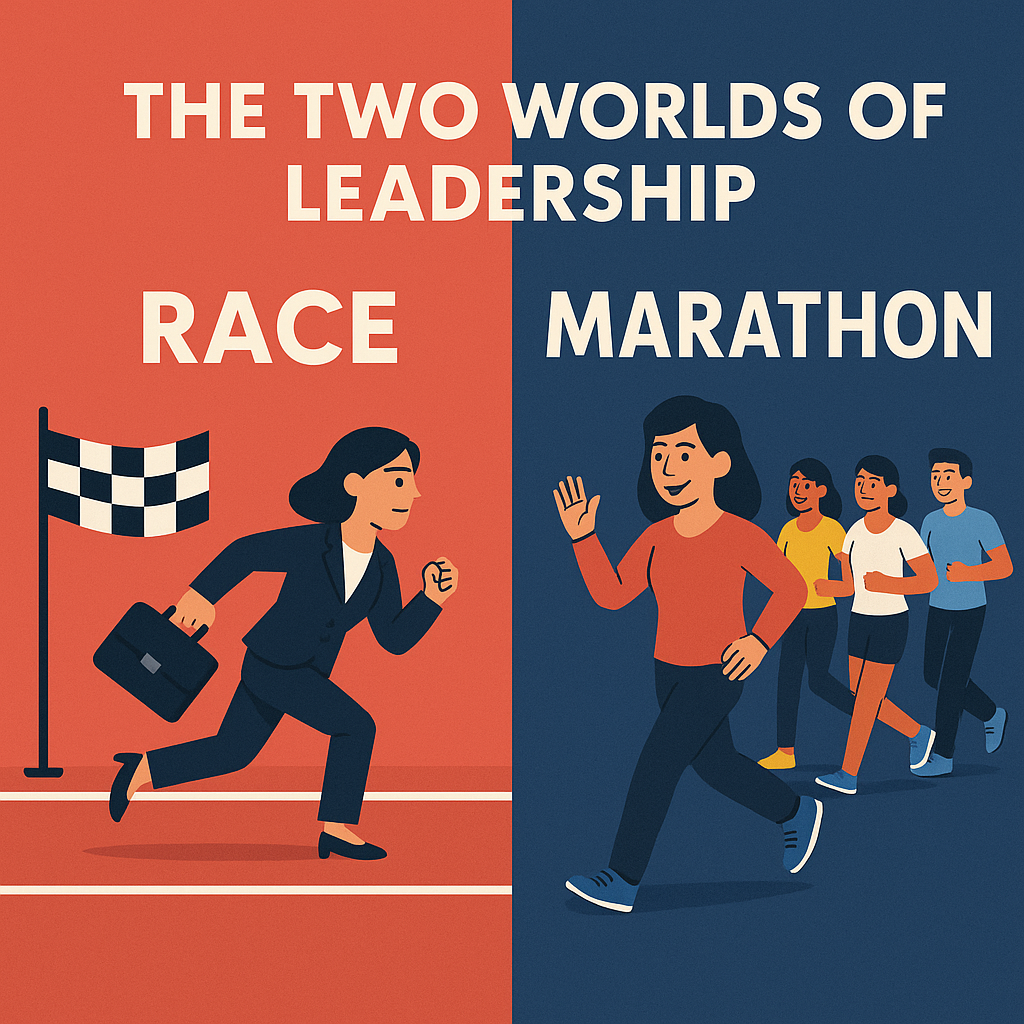Race vs. Marathon: The Two Leaders I've Chosen

In my career, I’ve had the rare opportunity to experience two vastly different types of leadership. They’ve left such a deep impression that I now see them not just as management styles, but as philosophies of life.
Picture this.
One type of leader treats the workplace like a race.
- Win fast. Win hard. Win at all costs.
- Efficiency is everything. Drive the team like an engine on max throttle—results over relationships.
- It’s about hierarchy, competition, and stories of lone heroes rising above the rest.
- There’s praise, yes—but it’s often delivered by contrasting one teammate as “brilliant” by calling another “not good enough.” The goal? Inspire through comparison. Motivate through fear of inadequacy.
The other treats work like a marathon.
- Pacing matters. Shared progress. Winning together.
- Effectiveness over frenzy. Use the car only when needed—not just because we paid for it.
- Here, growth isn’t measured just in revenue or headcount, but in how much people actually want to come to work.
- There are no whispered stories of who’s underperforming. Instead, leaders work hard to make everyone’s strengths visible and valued.
In the race world:
- You’re trained to outsmart, outshine, outperform—even deceive.
- Respect is conditional. Trust is transactional.
- Leadership is about control, comparison, and closing deals fast.
In the marathon world:
- You’re guided to be truthful, collaborative, and proud of collective wins.
- Respect is mutual. Trust is foundational.
- Leadership is about care, character, and continuous growth.
A Moment From the Marathon
I once saw the early signs of this “race” mindset taking root—right in a team I had helped build.
Back in the early days of the offshore team I was helping scale up, a group of three began subtly vying for influence. Rather than collaborating they started escalating issues directly to me, bypassing the person right next to them. It was an early warning sign—one that reminded me just how quickly hierarchy and competition can sneak in.
At our next monthly company-wide meeting, I brought it up—not as a scolding, but as a reset. I clarified that there was no pecking order. That line managers existed only for operational efficiency—not as symbols of rank, authority, or value.
What happened next was quietly powerful. A new sense of camaraderie formed. People opened up more, leaned on each other, and worked as a unit again. It felt like we were back on the marathon track. A horizontal hierarchy was established.
Unfortunately, wider organizational dynamics eventually pulled us back into a more traditional vertical hierarchy. The culture shifted, and with it came the usual symptoms—guardedness, mistrust, and subtle internal competition.
But that brief period remains a reminder: when leadership makes space for equality, people naturally move toward connection—not comparison.
One type of leader rewards clever deception and praises the ability to “play the game.” The other promotes honesty, mutual respect, and morals over manipulation.
One builds walls of hierarchy. The other builds bridges across roles.
One talks about money as the final prize, the endpoint. The other treats meaningful work as a lifelong journey worth continuing—even without a finish line.
The first type gets things done. But often at the cost of joy, trust, and personal dignity or a contrived version of these qualities that is imposed in a manipulative way. The second type? They might move slower. They might not scale teams to giant sizes or show dramatic profit spikes overnight. But they create something that lasts: a culture of happiness, of togetherness, of shared purpose.
Interestingly, I’ve come to believe that these leadership instincts aren’t just personal—they’re cultural. The first kind of leader I worked with was shaped by a world that prizes competition, individualism, and high-stakes performance—traits often emphasized in Western corporate environments. The second came from a background steeped in Eastern philosophies, where cooperation, inner balance, and mutual respect are often held in higher regard. For him, leading like a marathon runner came naturally.
The strange thing is, many people I know still believe the first kind is “how leadership works.” But it doesn’t have to be. It’s not just about what kind of leader you are. It’s also about what kind of leadership you choose to accept around you.
Not every team needs to be a race team. Not every finish line is worth the sprint.
The kind of leadership we accept—or enable—shapes more than our output. It shapes how we feel about ourselves, our work, and each other.
So, ready to choose the leader you’d like to become yourself? The world is full of wonderful people. Start finding your type, now.